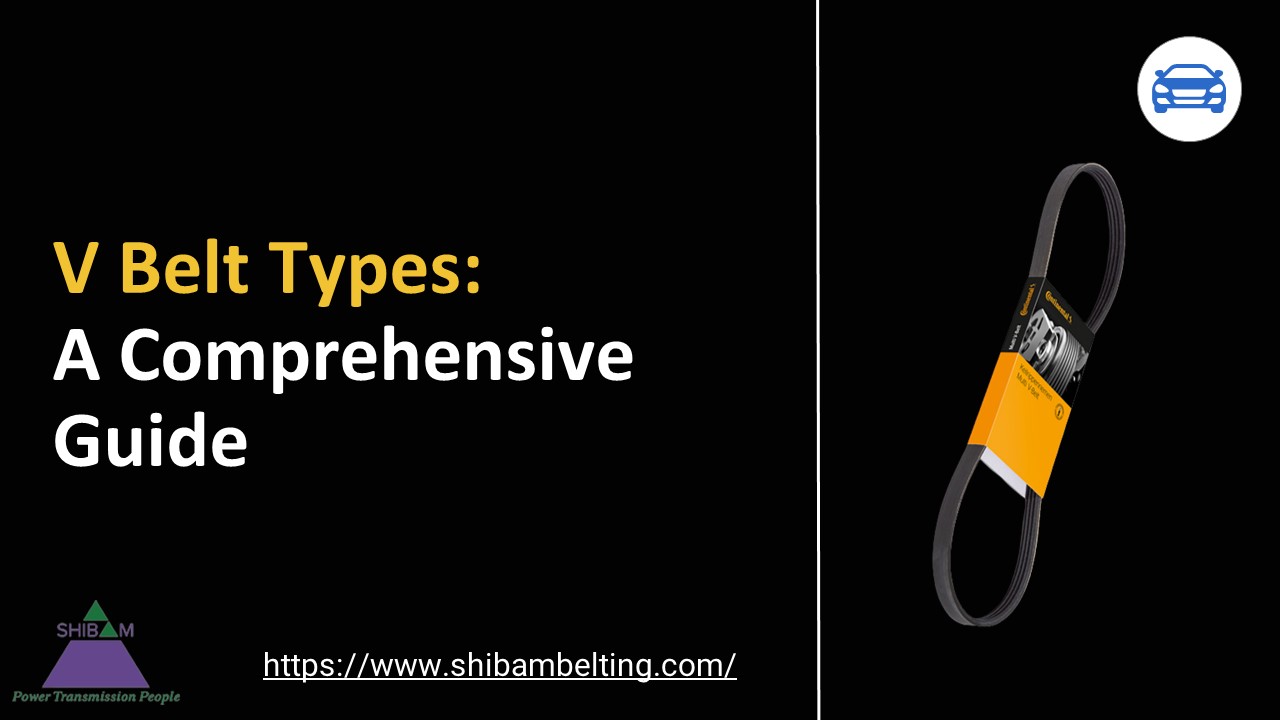V Belt Types: A Comprehensive Guide - PowerPoint PPT Presentation
Title:
V Belt Types: A Comprehensive Guide
Description:
Understanding the various types of V belts and their applications is essential for anyone working with power transmission systems. Classical V belts, narrow V belts, raw edge cogged V belts, variable speed V belts, double V belts, banded V belts, and ribbed V belts each offer unique characteristics to suit different requirements. For more information, visit: – PowerPoint PPT presentation
Number of Views:3
Title: V Belt Types: A Comprehensive Guide
1
V Belt Types A Comprehensive Guide
- https//www.shibambelting.com/
2
INTRODUCTION
- When it comes to power transmission, V belts play
a crucial role in various industries. These
flexible and durable belts are used to transfer
power from one component to another, ensuring
smooth and efficient operation. V belts are
commonly found in automotive engines, industrial
machinery, and even household appliances.
However, not all V-belts are the same. There are
several types of V belts available, each designed
for specific applications and operating
conditions. In this comprehensive guide, we will
explore the different V belt types and their uses.
3
1. Classical V Belts
- Classical V belts, also known as trapezoidal V
belts, are the most commonly used type. They have
a trapezoidal cross-section and typically feature
a fabric cover and a rubber body. These belts are
suitable for moderate power transmission
applications and are commonly found in industrial
machinery, agricultural equipment, and automotive
systems. Classical V belts offer high flexibility
and efficiency, making them a popular choice in
many industries.
4
2. Narrow V Belts
- Narrow V belts, as the name suggests, have a
narrower width compared to classical V belts.
They are designed to transmit higher amounts of
power within a smaller space. Narrow V belts are
commonly used in industrial machinery, such as
pumps, compressors, and woodworking equipment.
Their narrower profile allows for better
flexibility and increased speed capabilities.
These belts are often made of reinforced rubber
or synthetic materials to ensure strength and
durability.
5
3. Raw Edge Cogged V Belts
- Raw edge cogged V belts are designed to handle
high power transmission applications. They
feature a cogged or notched design on the inner
side, which increases the belt's flexibility and
grip on the pulleys. This design reduces bending
resistance and allows for higher power
transmission efficiency. Raw edge cogged V belts
are commonly used in heavy machinery, such as
construction equipment, mining machinery, and
industrial drives.
6
4. Variable Speed V Belts
- Variable speed V belts, also known as V-belt
drives, are designed to transmit power at varying
speeds. These belts have a wide range of speed
ratios, making them suitable for applications
where the speed requirements change frequently.
Variable speed V belts are commonly used in
machine tools, textile machinery, and printing
presses. They offer smooth and reliable power
transmission while allowing for easy speed
adjustment.
7
5. Double V Belts
- Double V belts, also known as hexagonal belts,
are designed to handle high-speed and high-power
transmission applications. These belts have a
hexagonal cross-section, allowing for increased
contact area with the pulleys. Double V belts are
commonly used in heavy-duty applications, such as
agricultural machinery, mining equipment, and
industrial conveyors. Their design provides
excellent power transmission capabilities while
reducing slippage and heat buildup.
8
6. Banded V Belts
- Banded V belts consist of multiple V belts joined
together with a band. This design increases the
belt's strength and stability, making it suitable
for heavy-duty applications. Banded V belts are
commonly used in industrial machinery, HVAC
systems, and power transmission equipment. They
provide reliable power transmission while
minimizing vibration and noise.
9
7. Ribbed V Belts
- Ribbed V belts, also known as serpentine belts or
multi-rib belts, feature multiple small V-shaped
ribs on the inner side. These belts are commonly
used in automotive engines, where they transmit
power to various components, such as the
alternator, water pump, and air conditioning
compressor. Ribbed V belts provide excellent
grip, reduce slippage, and offer high efficiency
in automotive applications.
10
CONCLUSION
- In conclusion, understanding the various types of
V belts and their applications is essential for
anyone working with power transmission systems.
Classical V belts, narrow V belts, raw edge
cogged V belts, variable speed V belts, double V
belts, banded V belts, and ribbed V belts each
offer unique characteristics to suit different
requirements. By selecting the appropriate V belt
type and implementing proper maintenance
practices, you can optimize efficiency,
reliability, and overall performance in your
industrial machinery, automotive systems, and
other applications.
11
Thanks!
- Do you have any questions?
- 971 25548117 shibamtraders_at_gmail.com
https//www.shibambelting.com/































